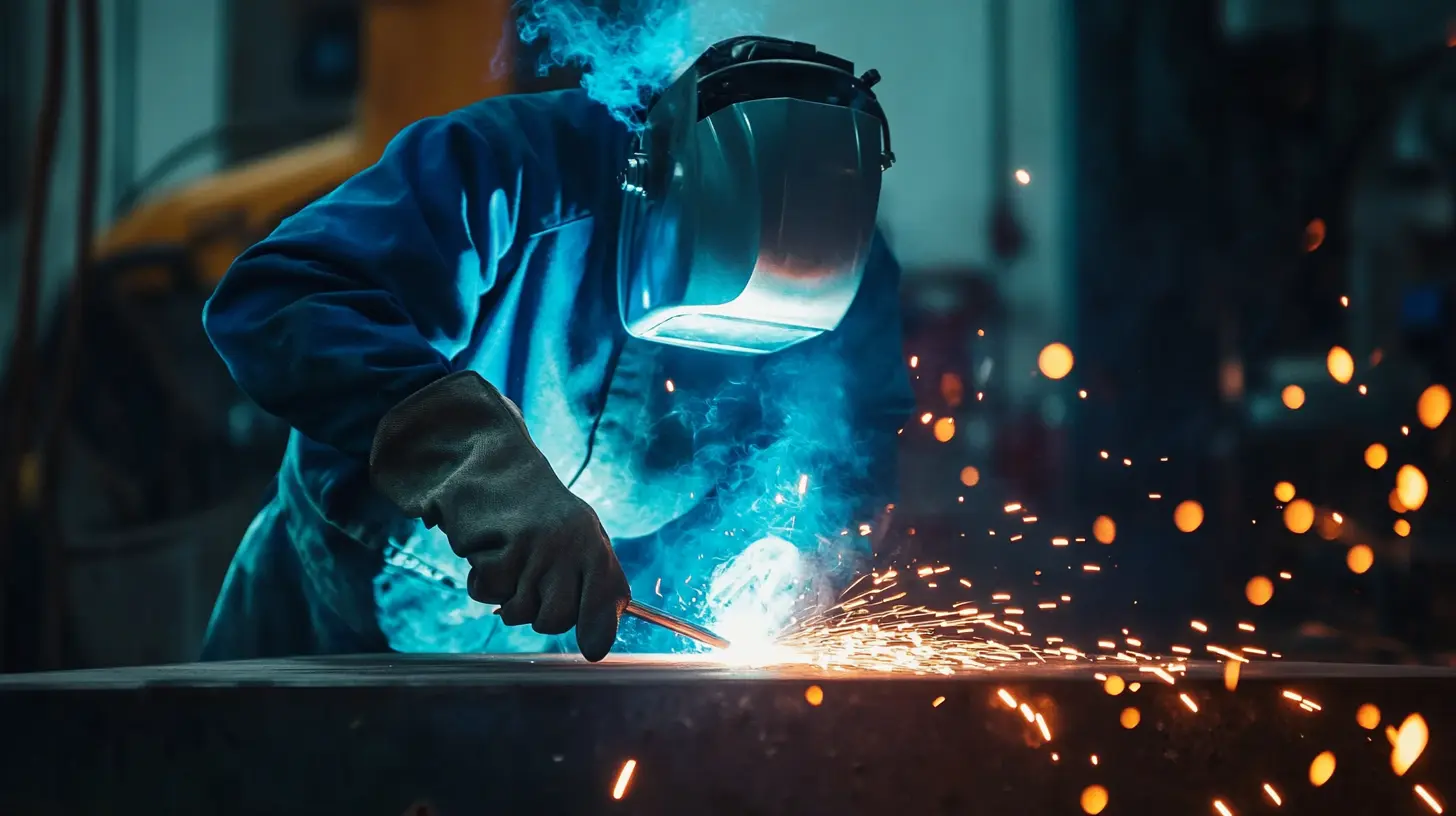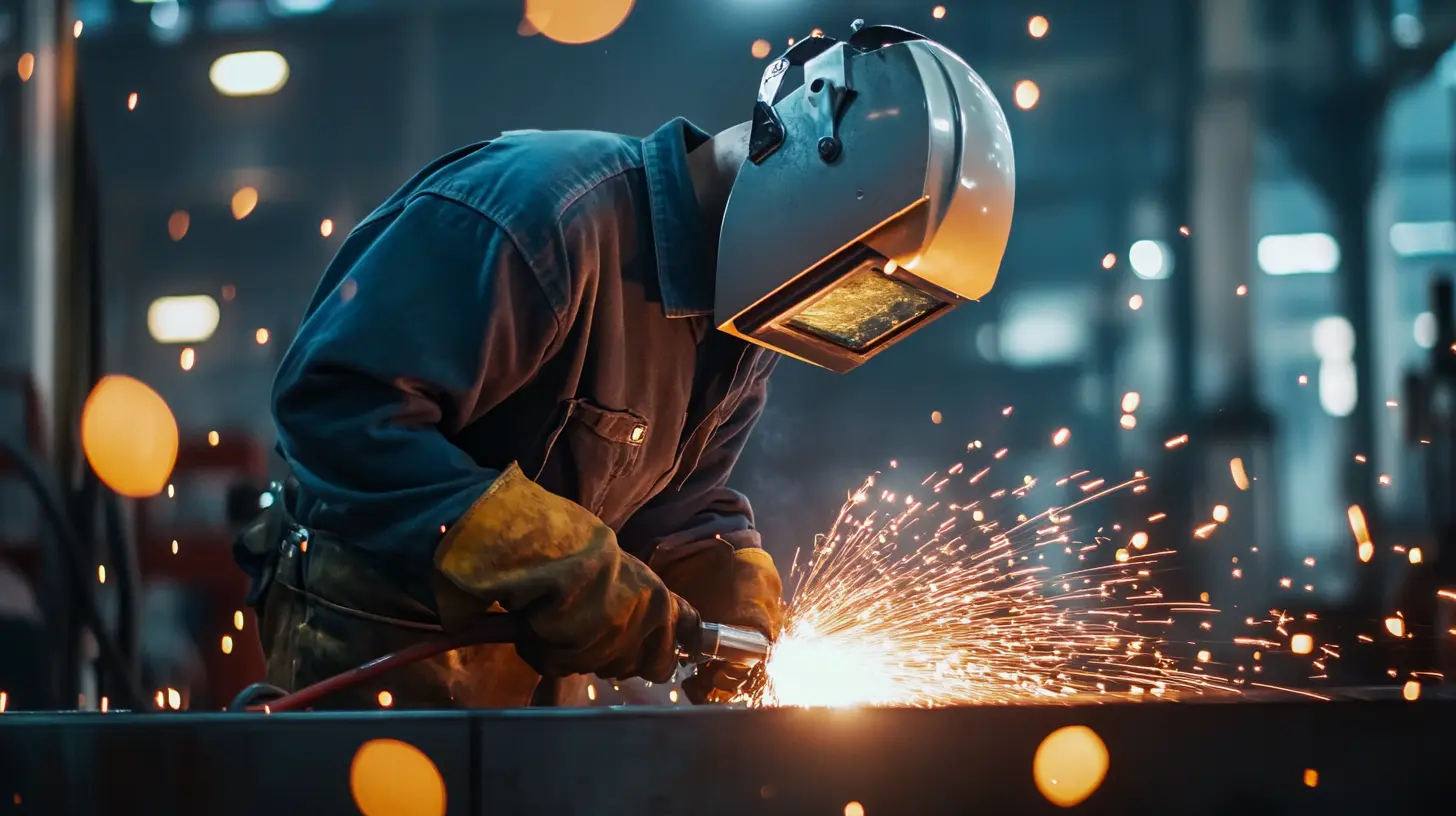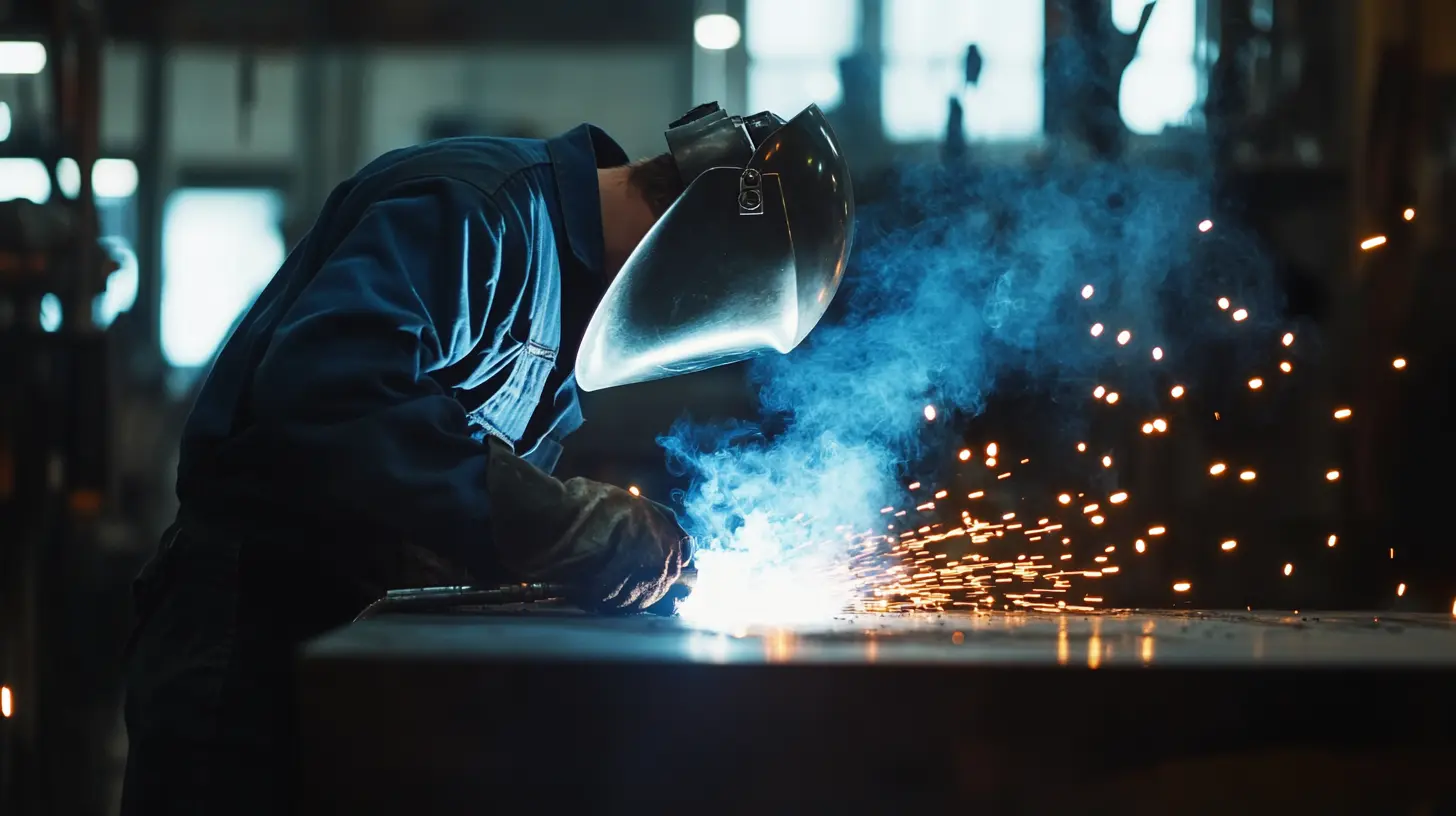This is really a very competitive and new world marketplace. It can indeed be quite understood how gas welders operate and what they do before buyers can think of reliable and efficient welding solutions. These are very popular in the automotive, construction sectors, metal industry, and more.
Advanced gas welding technology has created a lot of resources that facilitate important precision and speed that welds can produce by a professional using such as that from TAIZHOU YIKE MACHINERY CO., LTD.
TAIZHOU YIKE MACHINERY CO., LTD manufactures different audio applications based on the innovation with the high-quality and reasonable price levels as our company being in the advanced rank for welding equipment. Most of the global buyers convert into gas for their projects; thus, understanding how gas welders function and what they can give in welding work can increase a lot of productivity and efficiency as well.

Gas welding technology is the lifeblood of manufacturing and repair industries. With the growing industry, enhanced gas welding techniques have improved the efficiency and efficacy of any procedure involved. With gas welding techniques, temperature can be controlled with precision, which is extremely important when welding metals where quality and durability are demanded. A recent trend shows the welding equipment industry shifting toward more advanced solutions. Innovative technologies like accurate laser welding machines have led to this split from traditional gas welding. This helps to streamline processes and meet the high-quality expectations required in the manufacture of an outstanding range of products, including intricate metal components. As customers all over the globe are looking for reliable welding solutions, it is imperative to know these technologies.

Gas welders are extremely useful tools in a number of industries, especially metal fabrication and repair. These tools combust fuel gas with oxygen to produce a flame hot enough to melt metals for welding. Gas welding equipment is portable, versatile, and easy to handle, especially for jobs in remote locations where the use of electric power sources is rare.
In recent times there is a moderate growth in the welding equipment industry, which is attributed to advancement in welding technology and increased manufacturing demand. Gas welding being an attractive alternative complements the rapid emergence of inverter welding products. The whole range of industrial gases available-from pure gases to mixed gases-makes gas welders very adaptable for different applications and thus an attractive tool for global customers.

Gas welding is an important feature in industries; knowing about different types that are available in the market will enable the global buyer to make informed choices. These include the oxy-acetylene welder that is very traditional but effective in metalworking and the MIG or the Metal Inert Gas welder which is praised for versatility and easy handling-use in morphology-welding of products.
On an evolutionary note, inverter welding machines have come into the market owing to the lightness and the energy efficiency that mark them. Such a machine appeals to the professional and the hobbyist. Present trends point towards modernizing solutions offered by such new machines, an indication of a rising demand in welding equipment. When economies and manufacture still rise, the factor applies innovation to welding techniques, making the above analysis imperative regarding the available options with gas welders.

Gas welders are found in almost every field, especially in construction and automobile industries, and the manufacturing industry. Gas welders join metals and equipment, so their occupational importance has come quite a long way. Construction employs gas welding for the fabrication of buildings where everything needs to be portable and easy to use. This type of welding can also be employed as part of the vehicle repair and restoration processes, so all vehicles can be assembled and function safely.
Gas welders could also apply during the manufacturing of electronic products. Precision and quality are the major factors involved in gas welding applications for manufacturing electronic products. As much as industries are transforming themselves with innovations, gas welders will always be part of every new solution, increasing productivity exponentially in different sectors. Such companies that invest in modern techniques of gas welding would probably be above many competitors in the transforming global landscape.
Gas welders have many advantages, making them a popular welding process. First off, the versatility of gas-welded welding allows users to weld different metals most flexibly concerning the types of joints and thicknesses. This flexibility is very critical in industries ranging from auto-motive to construction wherein metalwork is truly the basic.
Likewise, one must not overlook the economics of gas welding. Gas-welding tools are often very cheap, compared with other welding machines, and the machinery itself is not that complicated to operate. Being more economically viable gives it a wide potential market, from small businesses to artisans, making it possible for anyone to do good-quality welding without much investment.
Another big advantage with gas welders is portability, which is very important in modern manufacturing. Because the process is more mobile, the ease of transporting welding tools plays a huge role in the buyer's decision, allowing repairs and construction to be executed on-site rather easily. These advantages make gas welding machines a much-needed tool in numerous trades.
To the welder's welfare and project integrity, safety considerations play a pivotal role during gas welding. Protective personal equipment (PPE) must be worn such as gloves, goggles, and flame-retardant clothing to mitigate hazards such as sparks and UV radiation. Apart from these, proper ventilation within the work environment must be provided to prevent the accumulation of harmful gases during the welding process.
It also involves ensuring that the workspace is well organized and maintained: in other words, the workspace is free from flammable materials. The equipment should be regularly inspected for wear and leak testing to avoid accidents early. Gas welders are also under high pressure and temperatures; thus, a fire extinguisher should always be available, and the operations should be strictly observed for a safe environment. The payoffs of such measures reduce the hazards associated with gas welding.
To keep gas welders productive, the above aspect needs to be tackled on a routine basis, which works well to address the overall shortage of skilled welders in the industry. Not having sufficient welders has really put the industry across the globe in a very critical situation. Therefore, improving the efficiency of the equipment available can greatly impact its productivity. Maintenance checks-such as checking for the level of gas, cleaning the welding torch, inspecting all electrical connections-could go a long way in enhancing the welders' lifespan while reducing downtime.
In fact, new technologies such as collaborative welding robots are becoming important tools to support work at the welding area. Most of these advanced systems come with apps that can guide the welders in choosing suitable materials and conducting all necessary calculations, enhancing speeds and efficiency in welding. Manufacturers could not only boost output by leveraging technology but also maintain high-quality standards through their effects in the mitigation of current tradesperson shortages.
The advantages gas welding offers as compared to MIG and TIG welding methods rest significantly on its portability and working on many materials. In outdoor applications, where electrical connections are practically unavailable, gas welding becomes even more useful. On the other hand, gas welding allows for flexibility and is able to work with thicker materials; therefore, gas welding is much sought after for certain industrial applications.
With recent advancements in welding technology such as mobile applications, the usability of gas welders is improved. These applications aid in grade selection and calculations, maximizing job efficiency. With smartphone applications that are software-intensive, welders can be able to assess various parameters and settings that allow for better planning and execution. This duality of traditional methods with modern technology thus speaks volumes of the welding evolution, thereby making gas welders one vital tool for professionals today in a fast-changing industrial landscape.
Today, the global market for gas welders is evolving rapidly, representing advances in technology and changing consumer views among industrials increasingly focused upon efficiencies and sustainability by intensifying demand for such versatile welding solutions. Portable and easy to use, gas welders are increasingly becoming part and parcel of various applications, say...
New discoveries made by archaeologists in China have very recently led to renewed interest in metalworking and welding techniques, reiterating their importance and linking them back into the modern practices used in society. Advanced gas welding technology will offer the bases for improved workflows in all spheres of work, whether among established enterprises or new entrants into the market. More important still, such investment will place the very identity of global buyers to recognize adaptability and innovativeness by making them competitive in their facility with advanced gas welding equipment amid increasingly dynamic changing industrial scenarios.
The landscape of the industry is being changed by future innovations in gas welding technology. Recently, automation advancements, including collaborative robots, have allowed huge increases in productivity in welding processes. These cobots can replace complex manual tasks, enabling manufacturers to achieve productivity increases by a factor of ten, thus opening new highways of efficiency not thought possible before.
In addition, digital tools are becoming essential for welders. Programs helping in the selection of welding parameters and grades allow for a more straightforward project plan and implementation, thereby making welding accessible to a wider audience. Today's development of ever-greater automation and usability means that gas welding has a future ahead that will empower seasoned professionals and newcomers alike with the means to thrive in a changing market.
The main types of gas welders include oxy-acetylene welders, which are traditional but effective for metalworking, and MIG (Metal Inert Gas) welders, known for their versatility and ease of use.
MIG welders are favored for their versatility and ease of use, allowing for efficient operation across various manufacturing applications.
Inverter welding machines are lightweight and energy-efficient welding tools suitable for both professionals and hobbyists.
Gas welders are highly portable and do not require electrical connections, making them ideal for outdoor applications where electricity may not be available.
Gas welders can handle thicker materials effectively, which gives them an advantage in specific industrial applications compared to MIG and TIG welders.
Recent advancements include the development of mobile applications that assist welders in selecting grades and making precise calculations, improving overall efficiency.
Smartphone applications help welders access vital parameters and settings, leading to better planning and execution of their projects.
There is a growing demand for innovative welding techniques and modern solutions, such as inverter welding machines, reflecting advancements in technology.
Understanding the various types of gas welders is crucial for global buyers to make informed decisions and adapt to the evolving needs in the industry.

